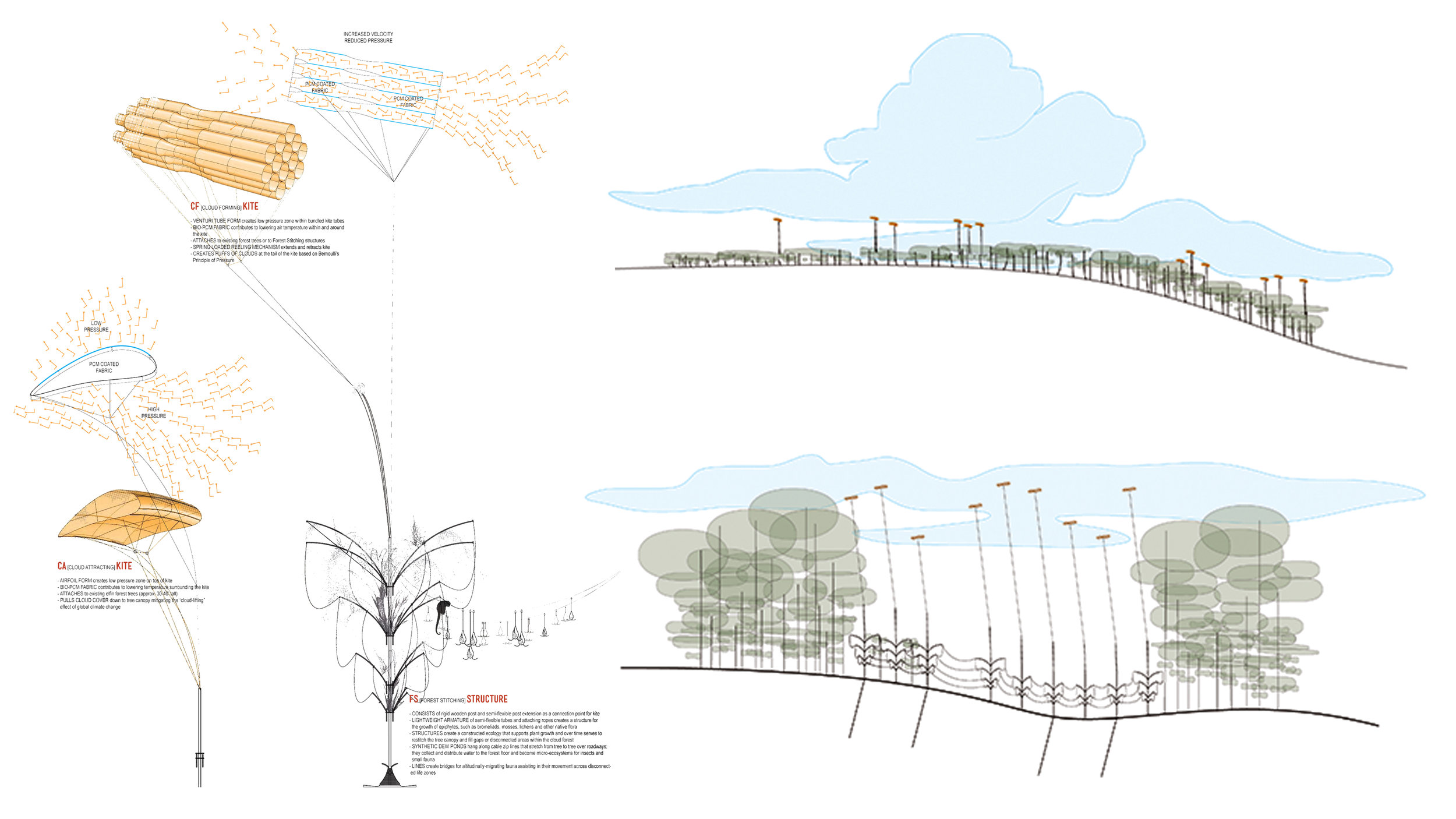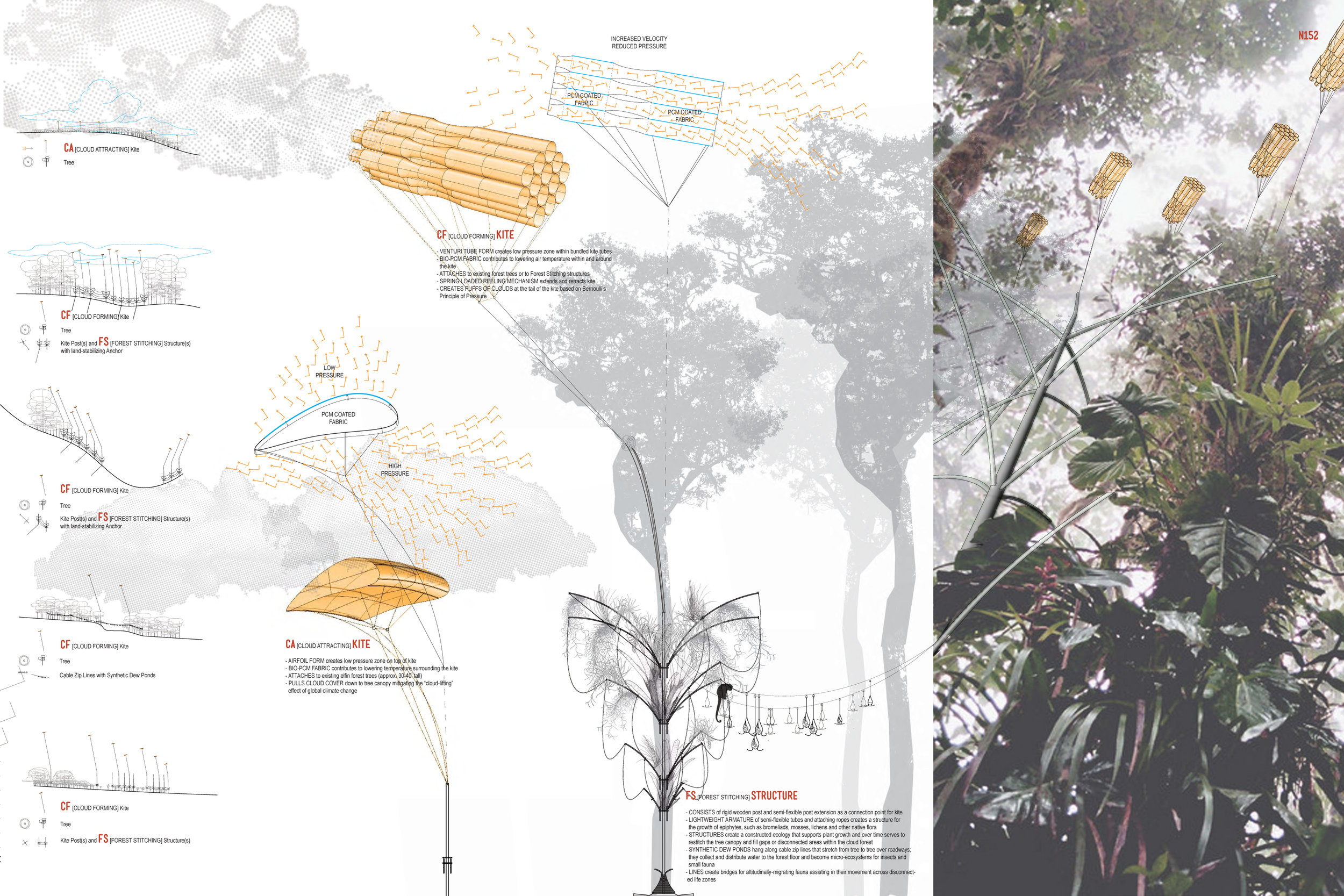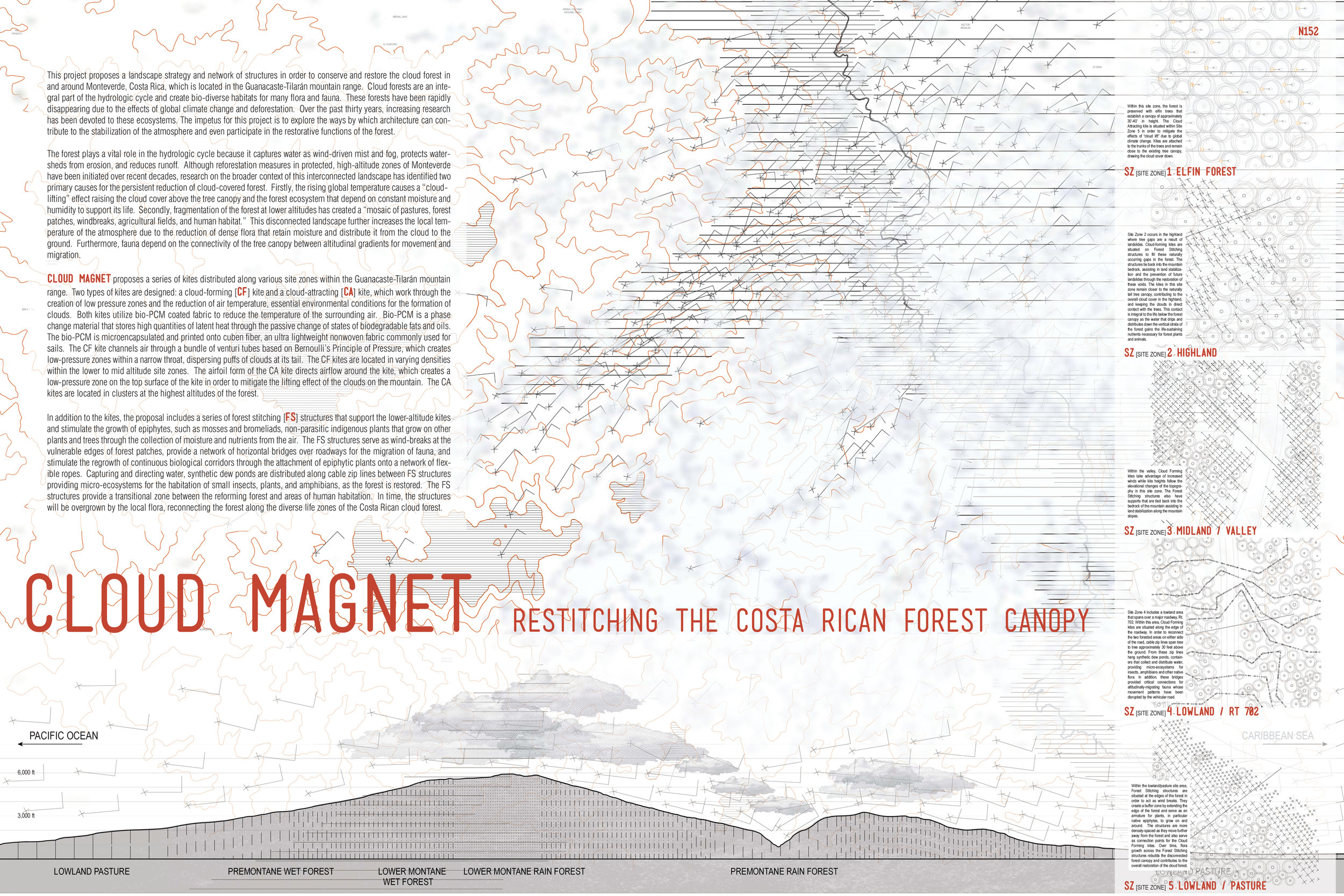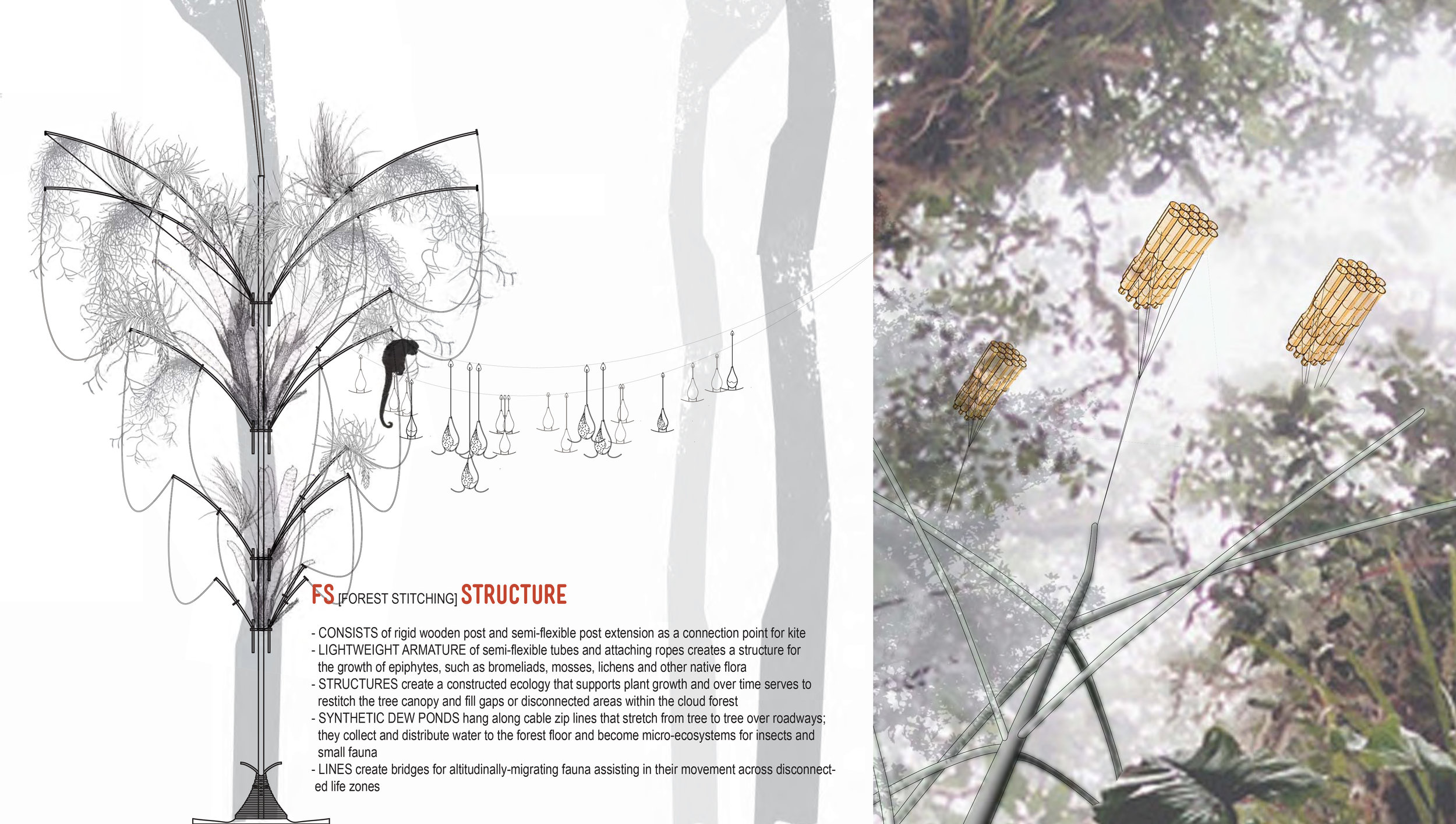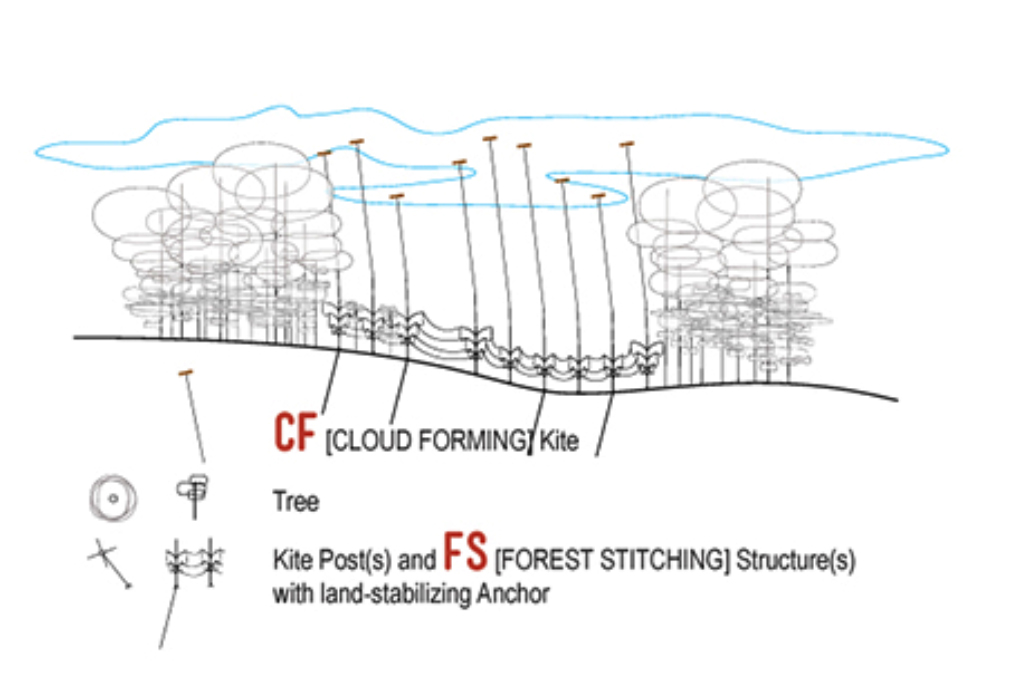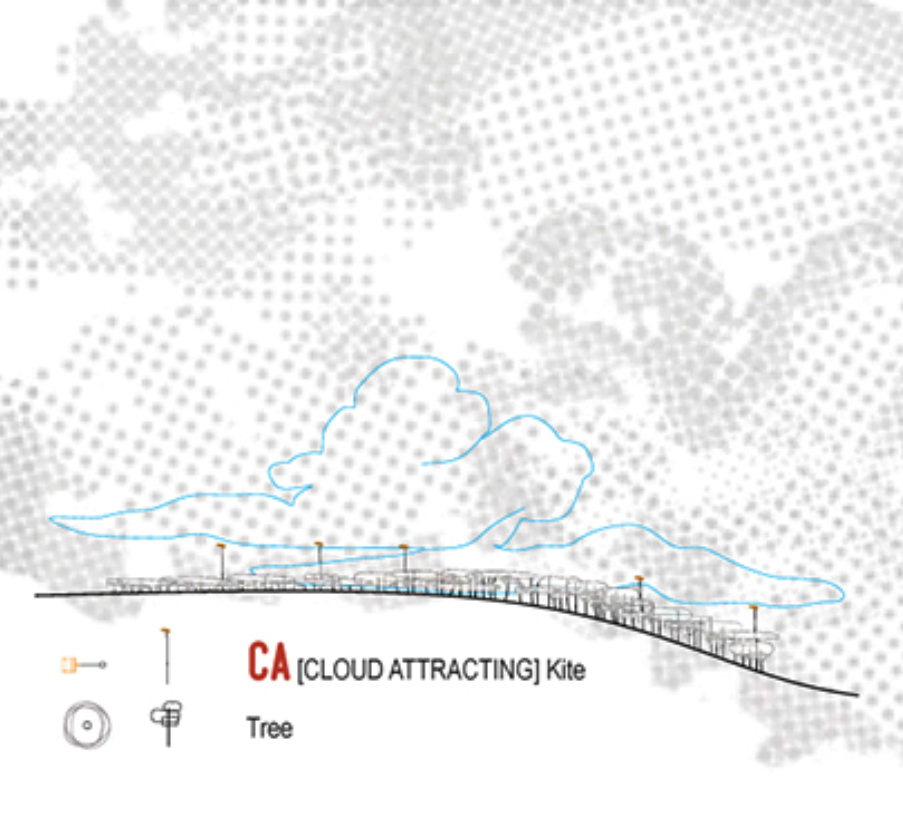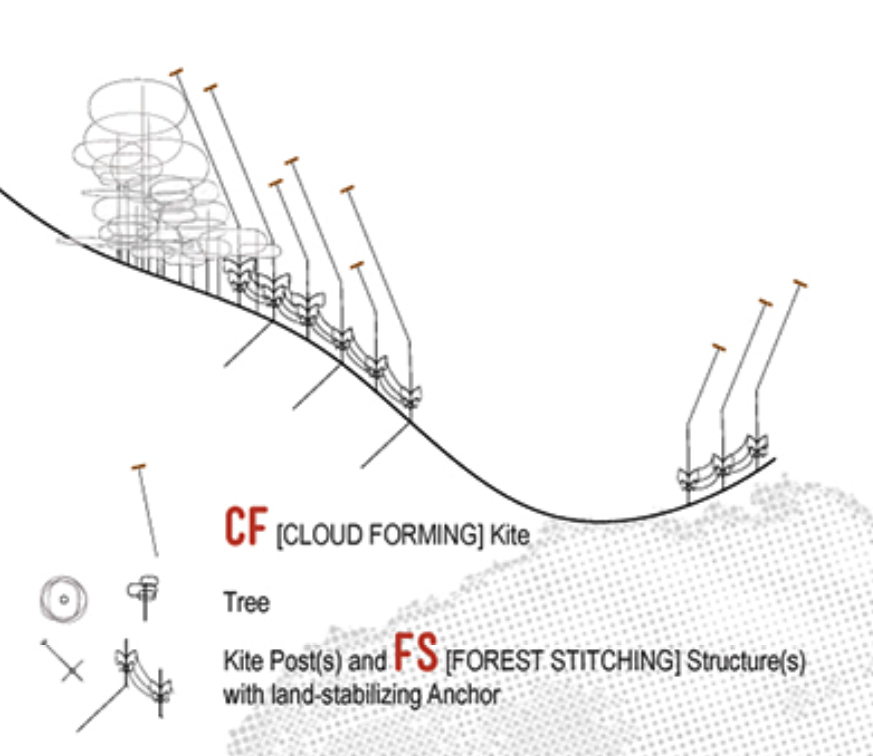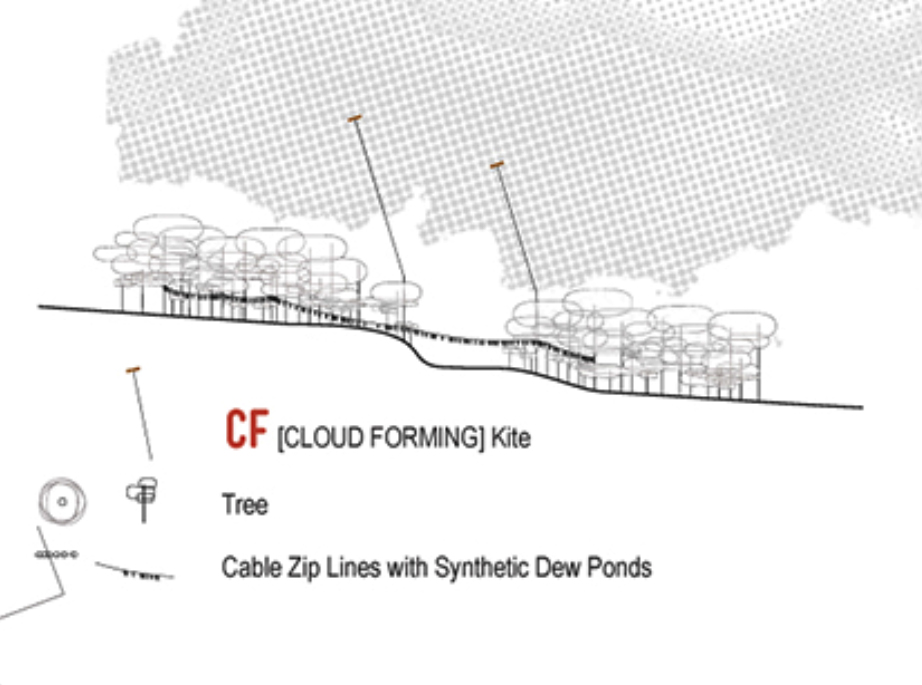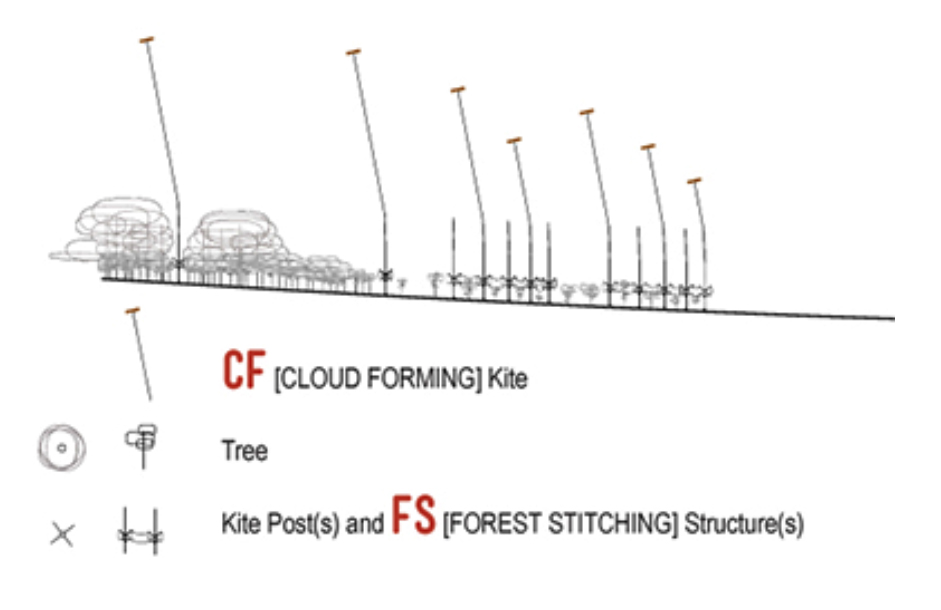Ecological Systems Enhancement.
This project proposes a landscape strategy and network of structures in order to conserve and restore the cloud forest in and around Monteverde, Costa Rica, which is located in the Guanacaste- Tilarán mountain range. Cloud forests are an integral part of the hydrologic cycle and create bio- diverse habitats for many flora and fauna. These forests have been rapidly disappearing due to the effects of global climate change and deforestation. Over the past thirty years, increasing research has been devoted to these ecosystems. The impetus for this project is to explore the ways by which architecture can contribute to the stabilization of the atmosphere and even participate in the restorative functions of the forest.
CLOUD MAGNET proposes a series of kites distributed along various site zones within the Guanacaste-Tilarán mountain range. Two types of kites are designed: a cloud-forming [CF] kite and a cloud-attracting [CA] kite, which work through the creation of low pressure zones and the reduction of air temperature, essential environmental conditions for the formation of clouds. Both kites utilize bio-PCM coated fabric to reduce the temperature of the surrounding air. Bio-PCM is a phase change material that stores high quantities of latent heat through the passive change of states of biodegradable fats and oils. The bio-PCM is microencapsulated and printed onto cuben fiber, an ultra-lightweight nonwoven fabric commonly used for sails. The CF kite channels air through a bundle of venturi tubes based on Bernoulli’s Principle of Pressure, which creates low- pressure zones within a narrow throat, dispersing puffs of clouds at its tail. The CF kites are located in varying densities within the lower to mid altitude site zones. The airfoil form of the CA kite directs airflow around the kite, which creates a low-pressure zone on the top surface of the kite in order to mitigate the lifting effect of the clouds on the mountain. The CA kites are located in clusters at the highest altitudes of the forest.
In addition to the kites, the proposal includes a series of forest stitching [FS] structures that support the lower-altitude kites and stimulate the growth of epiphytes, such as mosses and bromeliads, non-parasitic indigenous plants that grow on other plants and trees through the collection of moisture and nutrients from the air. The FS structures serve as wind-breaks at the vulnerable edges of forest patches, provide a network of horizontal bridges over roadways for the migration of fauna, and stimulate the regrowth of continuous biological corridors through the attachment of epiphytic plants onto a network of flexible ropes. Capturing and directing water, synthetic dew ponds are distributed along cable zip lines between FS structures providing micro-ecosystems for the habitation of small insects, plants, and amphibians, as the forest is restored. The FS structures provide a transitional zone between the reforming forest and areas of human habitation. In time, the structures will be overgrown by the local flora, reconnecting the forest along the diverse life zones of the Costa Rican cloud forest.
In collaboration with Sneha Patel, Justin Bernard, Michael Farinella, Malgorzata Primavera, and Caroline Wineburg.
Acknowledgements: Cloud Magnet: Re-Stitching the Costa Rican Forest Canopy was completed through SEAMLab, and awarded a Special Mention in Ecological Systems Enhancement in the 2014 d3 Natural Systems Competition.


